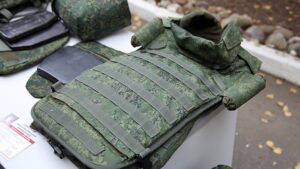Who has never seen, in action moviesthe famous scene in which a shot Certeiro hits a policeman, but to everyone’s surprise, he survives thanks to the bulletproof vest?
Far beyond movie screens, bulletproof vests are a day -to -day reality of professionals who face risky situations such as police, military and security guards.
However, have you ever wondered how this protection really works? Next, we will explain a little more about the Engineering behind the bulletproof vests.
What is a bulletproof vest?
A bulletproof vest, (or technically the “bullet resistant” vest) as the name already delivers, is a personal protective equipment designed to absorb and disperse the energy from firearms projectiles, reducing the risk of fatal injuries.
Well, it is not an impenetrable armor, but a barrier that seeks to protect vital organs and to offer greater survival to the user in risky situations.
The idea of protecting the human trunk in combat arose in the sixteenth century. And over time, it has evolved from metal armor to more sophisticated solutions. In the 1880s, Arizona’s coroner George E. Goodfellow, noted that silk scarves could reduce the impact of bullets and started studies on it.
Inspired by these findings, Polish Father Jan Szczepanik has developed a bulletproof vest wearing silk, wool and linen layers.
During World War II, the military adopted metal vests to protect pilots and tanks crews. They made the flak jackets with steel or fiberglass plates.
However, the big turn took place in 1965, with the discovery of Kevlar by Dupont scientist Stephanie Kwolek. Kevlar is a light, flexible and extremely resistant synthetic polymer, ideal for protecting against pistol bullets and fragments.
read more
How does a ballistic vest work?
As mentioned above, Kevlar is the main technology employed in ballistic vests. These fibers are intertwined to form a fabric that, when hit by a projectile, distributes the force of impact along a larger area. Thus, instead of drilling the body, the bullet loses energy by deforming the fibers.
In addition to kevlar, other high tenacity synthetic fibers are used, such as Dyneema and Tworon.
Each layer of fabric is carefully arranged to maximize the impact resistance and absorption of kinetic energy. In higher protective models, ceramic or steel plates are incorporated to resist higher caliber projectiles or perforating ammunition.
In short, a ballistic vest works using high strength synthetic fibers, intertwined in several layers. When the bullet reaches the vest, these fibers absorb and distribute the strength of the impact throughout the structure. This causes the bullet to lose energy by deforming these layers.
Thus, instead of crossing the body, the projectile is retained or attached to the fabric. In addition, the vest avoids fatal injuries and turns a dangerous shot into a strong blow that the body can withstand.
However, it is clear that there is still a risk of internal injuries, but the difference from a spot without vest is absurdly large.











